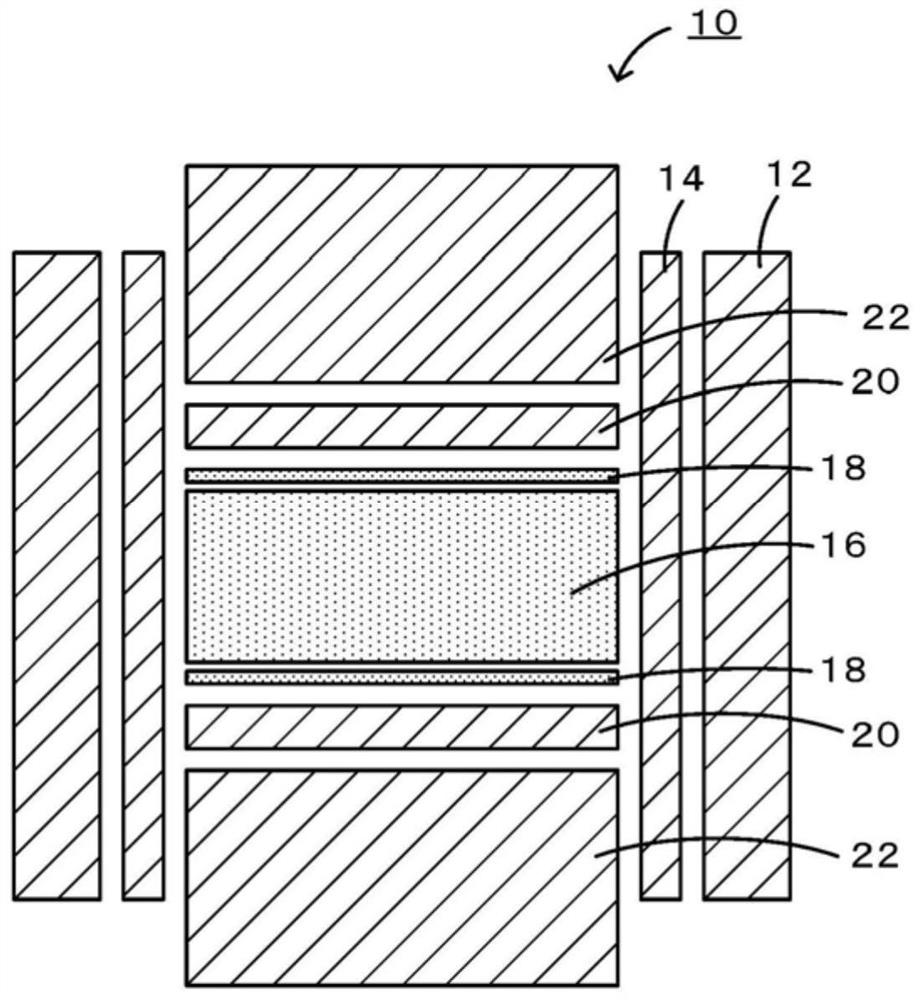Method for producing oriented ceramic sintered body and flat sheet
A technology for sintered body and ceramics, which is applied to the production method of oriented ceramic sintered body and the field of flat sheets, and can solve problems such as cracking of adhesive spacers.
- Summary
- Abstract
- Description
- Claims
- Application Information
AI Technical Summary
Problems solved by technology
Method used
Image
Examples
experiment example 1
[0035] 1. Production of alumina sintered body
[0036] (1) Production of alumina molded body
[0037] 0.5 parts by mass of commercially available tabular alumina powder (YFA10030, manufactured by KinseiMatec Co., Ltd., average particle size 10 μm, average thickness 0.35 μm, aspect ratio 29) and fine alumina powder (TM-DAR, average particle size 0.1 μm) were mixed , Daming Chemical Co., Ltd.) 99.5 parts by mass to prepare mixed alumina powder. When the mass ratio of the tabular alumina powder and the fine alumina powder is represented by T:(100-T), T=0.5. With respect to 100 parts by mass of the mixed alumina powder, 0.0125 parts by mass (125 mass ppm) of magnesium oxide (500A, manufactured by UbeMaterials), and polyvinyl butyral (product number BM-2, Sekisui Chemicals) as a binder were added Industrial product) 7.8 parts by mass, 3.9 parts by mass of di(2-ethylhexyl) phthalate (manufactured by Kurogen Chemicals) as a plasticizer, sorbitan trioleate (Rheodol SP) as a dispersa...
experiment example 2
[0061] In Experimental Example 2, commercially available tabular graphite powder (SGP-3, SEC carbon, average particle size 3 μm) was used. Except for this, an alumina sintered body was produced in the same manner as in Experimental Example 1. The molded sheet of Experimental Example 2 had a maximum cross-sectional height Pt of 0.378 μm and a void ratio of 51.6% (see Table 1 below). In addition, the XRC·FWHM of the outermost surface of the alumina sintered body was 2.1°, and the XRC·FWHM of the surface (inside) after grinding to 100 μm was also 2.1° (see Table 1 below). Thus, the obtained alumina sintered body is an oriented alumina sintered body, and the crystal orientation of the surface of the alumina sintered body is the same as the crystal orientation of the interior.
experiment example 3
[0063] In Experimental Examples 1 and 2, commercially available graphite powder was used as the raw material for the molded sheet, but in Experimental Example 3, commercially available boron nitride (USP-S2, manufactured by Showa Denko, average particle size 0.6 μm) was used instead. . Except for this, an alumina sintered body was produced in the same manner as in Experimental Example 1. The molded sheet of Experimental Example 3 had a maximum cross-sectional height Pt of 0.413 μm and a porosity of 25.3% (see Table 1 below). In addition, the XRC·FWHM of the outermost surface of the alumina sintered body was 2.2°, and the XRC·FWHM of the surface (inside) after grinding to 100 μm was also 2.2° (see Table 1 below). Thus, the obtained alumina sintered body is an oriented alumina sintered body, and the crystal orientation of the surface of the alumina sintered body is the same as the crystal orientation of the interior.
PUM
| Property | Measurement | Unit |
|---|---|---|
| roughness | aaaaa | aaaaa |
| roughness | aaaaa | aaaaa |
| apparent porosity | aaaaa | aaaaa |
Abstract
Description
Claims
Application Information
 Login to View More
Login to View More - R&D
- Intellectual Property
- Life Sciences
- Materials
- Tech Scout
- Unparalleled Data Quality
- Higher Quality Content
- 60% Fewer Hallucinations
Browse by: Latest US Patents, China's latest patents, Technical Efficacy Thesaurus, Application Domain, Technology Topic, Popular Technical Reports.
© 2025 PatSnap. All rights reserved.Legal|Privacy policy|Modern Slavery Act Transparency Statement|Sitemap|About US| Contact US: help@patsnap.com



